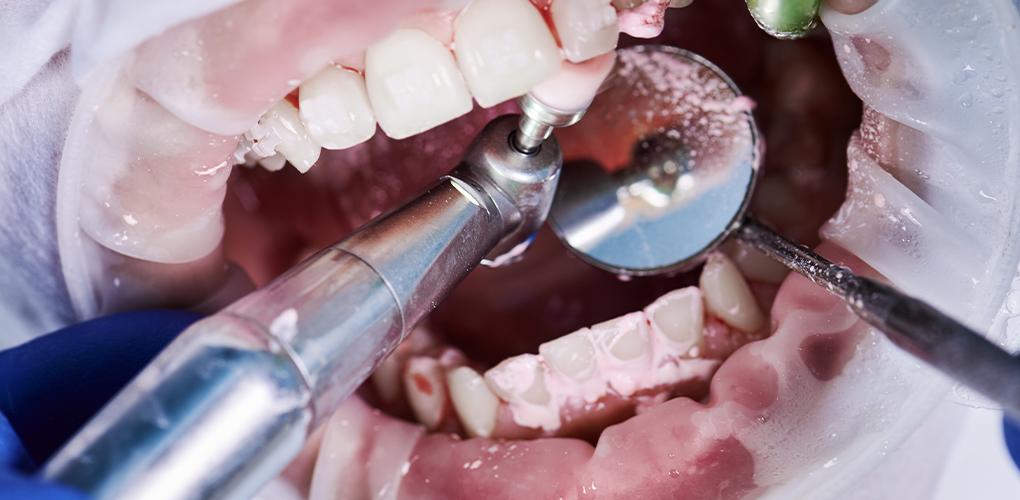Deep Dental Cleaning
Deep dental cleaning is recommended for patients diagnosed with gum diseases. Deep dental cleaning is an extensive procedure and is only recommended to patients who have severe gum diseases (periodontitis). Patients with gum diseases are advised to visit the dentist to maintain periodontal tissues to prevent any damage.
Long-term gum diseases can cause damage to periodontal ligaments and alveolar bone. This bone loss results in tooth loss. Periodontal diseases cannot be cured but can be managed with regular dental visits and periodic deep cleaning. Mostly deep dental cleaning is completed in two visits and takes about 40 minutes to one hour.
Definition of Deep Dental Cleaning
Deep dental cleaning is a procedure used to remove tartar buildup below the gum line. It makes root surfaces smooth to prevent bacterial accumulation. Deep dental cleaning is performed to prevent bleeding and swollen gums, bad breath, and periodontal damage. Deep cleaning is a gum therapy used to clean spaces (created due to tartar buildup) between teeth and gums.
Importance of Deep Dental Cleaning
Dental deep cleaning of teeth is meant to treat gum diseases and prevent gum damage. Deep dental cleaning is suggested to those who never had professional cleaning in their life or those who have periodontal diseases. Deep dental cleaning is like regular dental cleaning, it removes tartar buildup from root surfaces and smoothens them to avoid bacterial growth in the future.
Deep dental cleaning helps to reduce the depth of gingival pockets. A normal gingival pocket measures less than 3mm. Gingival pockets become deeper if a person has gingivitis or periodontitis. Deep cleaning is often performed under local anesthesia as it might cause discomfort because teeth roots have nerve endings.
Deep dental cleaning is designed to treat gingivitis and periodontitis and prevent them from worsening. Deep dental cleaning is recommended if periodontal pockets are deeper than 4mm or more. If gingivitis is left untreated it will cause bone and tissue damage.
Deep Dental Cleaning Procedure
Deep dental cleaning has two parts; one is scaling and the other is root planning. Deep teeth cleaning is usually completed in two sessions. The first session is the removal of tartar from tooth surfaces and is mostly done without anesthesia. In the second session, root planning is performed which involves the pulling of gums to clean teeth roots. Polishing of roots is performed once teeth roots are thoroughly cleaned and reattached to teeth.
Tools Used in Deep Dental Cleaning
Dental curettes and ultrasonic scalers are the common instruments used for deep dental cleaning. Dental curettes are used for manual deep cleaning, but they take longer time. Ultrasonic scalers are used for machine dental cleaning. Ultrasonic scalers are fast and effective tools for deep dental scaling.
Benefits of Deep Dental Cleaning
- Preventing gum disease
- Protecting tooth roots
- Eliminating bad breath
- Promote gum healing
- Prevent gingival damage
- Removing plaque and tartar build-up below the gum line
- Improving overall oral health
Deep Dental Cleaning vs. Regular Cleaning
Deep dental cleaning is different from regular cleaning. Regular cleaning removes plaque above the gum line while deep cleaning removes plaque below the gum line. Plaque and tartar buildup create spaces between teeth and gums.
- The difference between Deep Dental Cleaning and Regular Cleaning:
- Regular cleaning is performed to maintain oral hygiene and keep oral tissues healthy. Deep dental cleaning is performed to treat gum diseases and prevent gum damage. Regular cleaning is recommended for every individual while deep dental cleaning is only recommended to those who have been diagnosed with gum disease.
Unlike regular dental cleaning, once gum disease (periodontitis) is diagnosed, a patient must come every three months for follow-up visits to maintain periodontal tissues. Dental deep cleaning costs are a bit higher than regular cleaning.
Tips for Maintaining Oral Hygiene
- Brushing twice daily
- Flossing once a day
- Use antiseptic mouthwash
- Saltwater rinse 2-3 times daily
- Avoid hard and crunchy foods
- Increase vitamin C-enriched fruits and vegetables
Follow-Up Appointments and Check-Ups
Patients are advised for follow-up appointments every three months after a deep dental cleaning. Teeth need more care once periodontal diseases are diagnosed as it can increase gum and bone damage.

